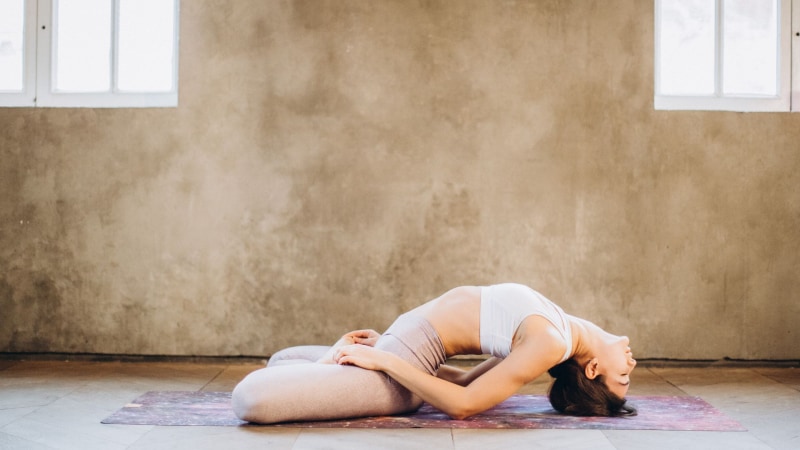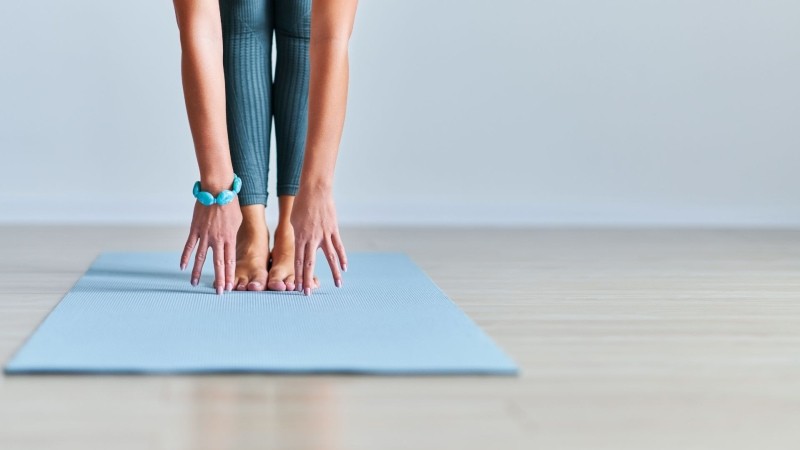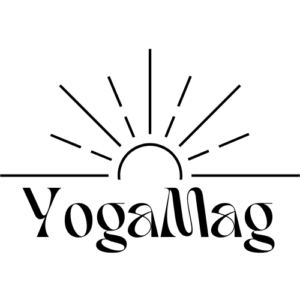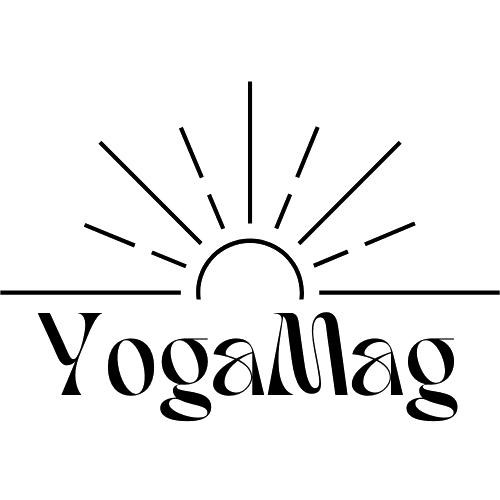Do you want to discover the magical power of inner peace? It’s a great way to gain physical and mental health. Yoga is an ancient practice that allows us to unlock the energy in our bodies and minds. We introduce you to yoga for beginners to help you develop your abilities and get started on your adventure. Learn about its benefits, how to get started and the best positions for beginners. Enjoy all the benefits that yoga can offer you!
Highlights
- Yoga can be used to regain inner peace and balance.
- The benefits of yoga include both physical and mental improvement.
- To start practicing yoga, contact an instructor or use the available training materials.
- There are many types of yoga for beginners, including hatha yoga, water yoga, three-person yoga and pranayama yoga.
- The best yoga positions for beginners are seated, standing, lying down and horizontal positions.
- The practice of meditation helps you discover inner peace and balance.
Introduction
Yoga is an effective practice that strengthens the body and mind and provides inner peace and well-being. It is a gentle way to achieve a better balance of body and mind. Regardless of your level, yoga can be a great way to start your day.
If you are a yoga beginner, it is important to start slowly. Learn the basic positions so you can perform them correctly and safely. Below are the most popular postures that are a great starting point for novices:
- Tadasana (tree top): This pose is considered the basic starting point for many yoga postures. Keep your shoulders and back straight, and focus on your feet to maintain balance.
- Uttanasana (mountain tilt): This pose contributes to stretching the back and gently relaxing the muscles of the lower back.
- Virabhadrasana (warrior pose): This asana stimulates the heart and helps build strength and endurance. It is a great pose for beginners because it will teach you to maintain balance.
Remember to always focus on breathing while practicing. Breathing will help you relax and maintain your balance. Focus on your breathing and the fluidity of your movement while performing the pose.
Yoga is an effective way to improve your physical and mental health. If you are a beginner yogi, try to focus on working on your technique and don’t worry about getting results. Remember that it is very important to make exercise a pleasure!
Benefits of yoga
Yoga is an ancient practice that allows us to draw deep peace and inner strength. It is extremely effective in positively enhancing our physical and mental health. Here are some of the benefits you can gain from practicing yoga:
- Making your body more flexible – Yoga helps strengthen and flex muscles, which can reduce pain and discomfort. Yoga exercises can also help you achieve better posture.
- Improving yourmood – Yoga regulates your stress hormones, which can result in reduced anxiety and depression. It can also help you cope with stress.
- Calming the mind – Yoga requires you to focus on your breathing and postures. This helps calm the mind and prevent bad thoughts. It can also help you focus on your goals.
- Increased self- awareness – Over time, you may notice that your self-awareness increases with yoga exercises. This can help you discover new aspects of yourself and the world around you.
Yoga can also help you discover your inner beauty, strength and harmony. It can be a great way to release the energy hidden in your body and mind.
What is yoga?
Yoga is an ancient practice that combines meditation, exercise, breathing and postures. It is an excellent way to strengthen your body, mind and spirit. Yoga can help you reduce stress, strengthen and flex your body and achieve inner peace. You can choose between different types of yoga, from fast-moving to more static.
Yoga can be practiced by anyone. It doesn’t matter what your fitness level is – there are postures and techniques to suit your needs. All that matters is that you practice according to your abilities and gradually increase the intensity of the exercises. Most yoga is based on the breath, so it’s important to focus on your breath while practicing.
There are many different yoga postures and techniques. Here are some popular positions for beginners:
- Ustrasana – this pose helps relax the abdominal and neck muscles.
- Adho Mukha Svanasana – this pose is one of the simplest postures and is perfect for beginners.
- Virabhadrasana I – this position is good for strengthening the leg muscles.
- Trikonasana – this pose stretches the muscles of the back and shoulders.
If you want to start your adventure with yoga, start with simple positions and gradually increase the intensity of the exercises. The most important thing is to practice regularly and stay consistent. In time, you will discover the magical power of inner peace!

Practice meditation as a tool for discovering inner peace
Meditation is an important element of yoga that allows us to discover the magical power of inner peace. The practice of meditation can help you reduce stress, improve the quality of your sleep and your sense of calm. It can also help you quiet your mind and unblock your energy.
To begin meditation, you need to take a moment to focus on your breathing. It is best to sit in a simple and comfortable position that will allow you to be relaxed and aware of your thoughts. Notice your body and the sensations you are experiencing. Pay attention to your breathing and focus on it.
You can also use the “čakra-meditation” technique to go through the various chakras. Čakra-meditation is a technique that involves focusing on individual chakras in our body and feeling their energies. Imagine that your body is surrounded by a glow of light and you allow it to expand and dissipate. In this way you can achieve a better contact with your body and mind.
After practicing meditation, you may feel more calm and relaxed. You may also feel relieved and have greater access to your inner power. Remember that meditation is a process, not an end in itself – so it’s important to practice meditation systematically to see a significant difference in your life.
How to start your adventure with yoga?
To begin your adventure with yoga, start with basic postures and breathing techniques. It is not difficult, but it is important to do the exercises correctly. Yoga can be fun and easy to master if you are consistent and patient. Here are some tips to get you started on your journey:
- Find the right exercise room. If you want to try yoga in a group, search for places in your area that hold classes. Remember that you can also take advantage of free online instruction.
- Expand your knowledge. Read books about yoga and watch instructional videos. You can also ask a teacher for advice or use free online educational materials.
- Set a goal. Try to focus on the goal you want to achieve, such as improving your posture or gaining relaxation. This will help you focus on your exercise and keep you motivated.
- Relax. You don’t have to be perfect to reap the benefits of yoga. Don’t be afraid to make mistakes – they will help you better understand the techniques.
- Maintain regularity. Perform the exercises regularly to effectively develop your skills and realize the full potential of yoga.
Learning the basics and techniques of yoga can be fun and rewarding. With exercise and practice, you can feel the physical and mental benefits. Use our website yogalifestyle.com to learn more about yoga for beginners!

Yoga exercises for beginners
Yoga is an effective way to relax your body and mind, as well as improve your posture and health. We introduce you to some basic yoga postures to help you get started on your yoga adventure.
The most important thing is to perform the exercises according to the guidelines and pay attention to your body. Choose the positions that you are most comfortable with and adjust them to your level of experience. Don’t overdo the intensity to avoid injury.
1st Sitting Position: Sukhasana
This position is ideal for beginners because it is relatively easy to perform. Sit up straight and stretch your back, then rest your hands on your knees. Stay in this position for a few minutes to calm down.
2 Standing position: Tadasana
Tadasana is a basic upright state in which you can focus on your posture. Stand with arms straight and feet level. Focus on breathing and feeling the liquid energy inside your body.
3 Lying down position: Supta Baddha Konasana
Lie comfortably on your back and relax your body. Rest your head against the woolen pillows or mattress for support. Draw your knees toward you and place your hands on your hips or shoulders.
4 Standing position: Trikonasana
Trikonasana, or triangle, is a dynamic pose designed to stretch the muscles of the back, abdomen and hips. Stand with your feet shoulder-width apart and cross your legs so that your right knee is over your left knee. Turn toward your left foot and lean your shoulder against a wall or toe.
5 Lying down position: Savasana
Savasana, or dead body position, is very relaxing and ideal for the end of a yoga session. Lie on your back and place your hands next to your body, then close your eyes. Breathe deeply and relax the muscles of your face, shoulders, abdomen and thighs.
Have a successful exercise!
Types of yoga for beginners
- Hatha yoga is a relatively gentle and undemanding type of yoga that focuses on breathing and postures. It is a great way to start your yoga adventure.
- Vinyasa y oga is a faster and more dynamic type of yoga in which the postures are linked by dynamic movement. It is recommended for people who already have basic skills.
- Restorative Yoga is a very relaxing form of yoga that uses external support in the form of blankets, pillows and straps. The focus in this type of yoga is on deep relaxation and rest.
- Iyengar y oga is a more rigorous form of yoga that focuses on precise execution of postures by using external objects to support the postures. It is indicated for those looking for a precise workout.
Yoga is a great way to regain inner peace and health. It will help you reduce stress, improve posture, strengthen muscles and integrate body and mind. Yoga for beginners offers many benefits, and all you need are a few simple postures that you can do at home.
There are also many other types of yoga to suit different needs. Choosing the right type of yoga can be difficult for beginners. That’s why it’s important to carefully analyze your goals and preferences and talk to your yoga teacher about the best option. That way you can be sure it will be right for your needs and skill level!
The best yoga poses for beginners
Beginners who want to get started with yoga should start by learning basic yoga positions. This will help you understand the principles, but most importantly, it will be a good starting point for your practice. There are many yoga postures that are simple and suitable for beginners. Check out the following postures:
- Tadasana (mountain pose): This pose is ideal for beginning because it teaches you stability and balance. Standing up straight while maintaining awareness of your body and breathing.
- Uttanasana (prone position): This is a simple prone position in which you must focus on your breathing. Focus on your posture and maintaining balance.
- Vrikshasana (tree position): This position is a great exercise for concentration. Focus your attention on the point of support and breathe deeply.
- Adho Mukha Svanasana (dog pose): This is an excellent position for exercising muscle strength and maintaining balance. Keep your torso straight and focus your attention on your breathing.
- Savasana (corpse pose): This is the most important pose for beginners, as it is the simplest posture for relaxation. Focus on your breathing and relax.
Once you have mastered these few basic yoga postures, you can move on to more complicated ones. Remember that there are many different styles of yoga practice, so look for the one that suits you best. You will see that with patience and practice you will achieve great results!

Discovering inner peace
Yoga is an ancient practice that allows you to find inner peace. It’s an excellent method for unblocking the energy in our bodies and minds. Yoga can help you achieve physical, mental and emotional health.
There are many different types of yoga, but they all have one thing in common: using physical postures (asanas), breathing (pranayama) and meditation (dhyana) to restore balance. All it takes is a small amount of time to get started on your yoga adventure. Here are some tips to help you get started with your practice.
- Set your goals: determine what you want to achieve with your yoga practice – do you want to improve your health and fitness, or focus more on inner peace?
- Find a teacher: look for a good yoga teacher who can help you achieve your goals. Ask the teacher for advice on postures and breathing.
- Start slowly: if you are a beginner, start with light postures and gradually time your practice.
- Maintain regularity: regular yoga practice will help you achieve more. Set yourself a practice schedule and stick to it.
Yoga is a great way to get physically and mentally healthy. Whether you’re a beginner or an advanced yogi, discovering inner peace is possible for everyone. Start your adventures with yogalifestyle.com and give the forces of inner peace a chance to unfold!
Summary
When starting your adventure with yoga, it’s important to know what types of yoga are available for beginners. There are many types of yoga tailored to different levels, so it’s important to find the right type for your needs. Here are some popular types that are perfect for beginners:
Benefits of yoga for beginners include things like:
- Improved posture – Yoga exercises help strengthen the back and abdominal muscles that help maintain proper posture.
- Relaxation and relaxation – Yoga helps quiet your mind and body so you can relax.
- Increased flexibility – Yoga exercises help stretch and lengthen your muscles to increase your body’s flexibility.
- Increased body awareness – Yoga exercises help you get a better connection between your body and mind.
If you want to reap the benefits of yoga, yogalifestyle.com provides information about the benefits and tips for learning yoga. You will also learn there about the best poses for beginners. You can also contact a professional yoga teacher for personalized advice on the practice.
Don’t wait any longer and start your journey with yoga! Discover the magical power of inner peace!
Frequently asked questions
Can yoga help me regain inner peace?
Yes, yoga can help you regain inner peace. Yoga exercises help us quiet our mind and body, deepening our awareness. Through relaxation, breathing and postures, your body and mind will become relaxed and calm. For more information on yoga techniques for beginners, visit yogalifestyle.com, where we share simple yoga techniques to help you discover the magical power of inner peace.
Are there any benefits associated with practicing yoga?
Yes, practicing yoga can bring many benefits. Yoga can help you strengthen your body, increase your stamina and relax. It can also help you gain better concentration and reduce stress. It can be a great opportunity to discover inner peace, reduce tension and gain a better awareness of the body and mind.
How can I start practicing yoga?
To begin practicing yoga, it is best to start with simple postures. This will help you build a base of knowledge and techniques used in yoga. Start with breathing exercises to free your mind and body. Then try postures such as sitting, breaking, chair, bridge, standing postures, salabhasana, svanasana and calming balasana. Remember to focus on your body and feeling balance and inner peace during your practice.
What are the types of yoga for beginners?
There are many different types of yoga for beginners. These can include hatha yoga, yin yoga, vinyasa yoga, yivamukti yoga and many others. All of these types are designed to promote inner peace, helping to unblock energy in our bodies and minds. You can also use breathing techniques or meditation to help you achieve a deep state of relaxation and provide stress release.
Which yoga postures are best for beginners?
For beginners, we recommend starting with the sitting position on a chair, which is easy and allows you to stabilize your breathing. Other good positions for beginners include standing bow, cobra, rabbit belt and scorpion pose. Use these positions when practicing yoga to discover the magical power of inner peace.
Can meditation help you discover inner peace and balance?
Meditation is an important element of yoga that helps you discover inner peace and balance. Yoga for beginners can be a great way to learn about the benefits you can gain through meditation. You can start with simple yoga techniques such as pranayama breathing, hatha postures and positions that promote relaxation. For more information on different meditation techniques, see our yoga guide for beginners.
Are there any exercises I can do at home to start practicing yoga?
Yes, there are many yoga exercises you can do at home. Start with breathing techniques such as pranayama – breathing techniques that allow for deep relaxation and mindfulness. Basic yoga postures such as standing bow (urdhva dhanurasana), standing tree (vrksasana), cobra pose (bhujangasana) and cat’s back pose (marjaryasana) are just some of the exercises available online for beginners. In addition, we also offer meditation exercises, such as mindfulness practice, which you can join no matter where you are.
Should I contact a live instructor to continue practicing yoga?
Yes, if you decide to continue practicing yoga, we recommend contacting an instructor. With the instructor’s help, you can find out which postures and techniques are right for you, which will help you achieve better results in your yoga practice. If you are looking for further inspiration, yogalifestyle.com is the perfect place to find simple and effective yoga techniques to discover the magical power of inner peace.
How can I improve my yoga practice skills?
To improve your practical skills in yoga, you need to dedicate yourself and practice systematically. It is important to follow the basic rules and know how to start. It’s best to start with simple postures, such as sitting, prone and lying down. The next step is to understand the breath and its importance in the practice. After a while, you can try more difficult positions, such as camel pose or lotus position. Before each practice, focus on meditation and relaxation. This way you can discover the magical power of inner peace.
What are the best educational materials for learning yoga?
If you are looking for the best educational materials for learning yoga, check out our website yogalifestyle.com. Here you will find simple and effective yoga techniques for beginners to discover the magical power of inner peace. With our educational materials you will learn the benefits of yoga, how to get started and the best positions for beginners.

